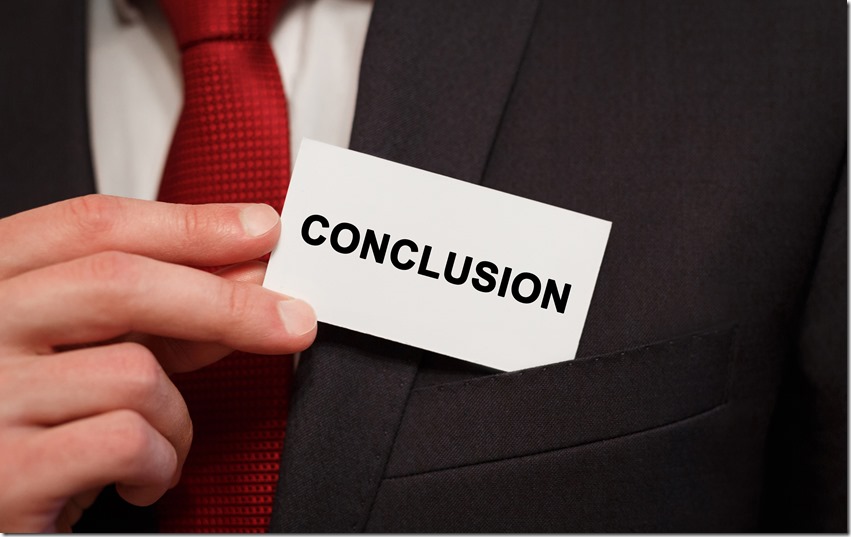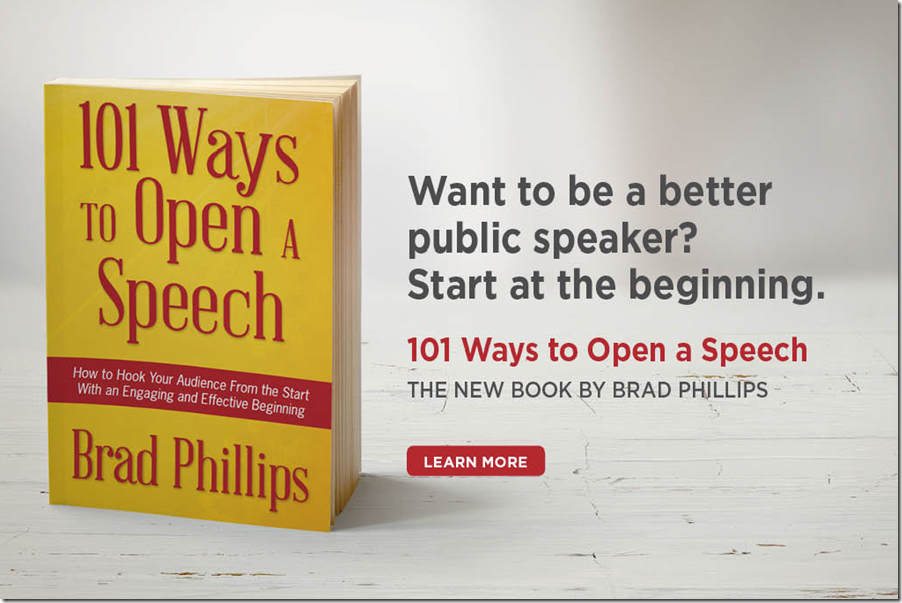15 Great Ways To Close A Speech (Public Speaking Essentials)
What would you like your final words to achieve? Do you want audience members to get involved in your advocacy efforts? Reconsider previously held views? Have a more complete or nuanced understanding of your topic?
In the last post, you learned how to close your presentations with two closes, not one. In this post, you’ll learn 15 memorable ways to end on a high note.
1. The Summary Close: This close, which recaps the main points you made during your presentation, can serve as a useful reminder and ensure that the audience leaves with clarity on your biggest ideas. Because this isn’t the most creative option, it can often be improved by combining it with another type of closer.
2. The Illustrative Close: You can end by using a first- or third-person anecdote, case study, or fable; an apocryphal (fictional but plausible) tale; or another storytelling device that illustrates the main points you made during your talk. Many talks begin and end in this manner.
3. The Personal Close: Many speakers discuss their personal connection to the speech topic well before the close. But if you don’t plan on highlighting your own ties to the topic sooner, doing so at the end can serve as a powerful final rapport builder.
4. The Bookend Close: Just as matching bookends are used at the beginning and end of a row of books, matching speech bookends use the same opening and closing device. One client began his talk by discussing “The Carrington Event” — a large solar flare observed in 1859 that resulted in a pre-sunrise red sky and telegraph systems around the world shutting down — and concluded by discussing the catastrophic consequences of such an event occurring today (such as the eastern seaboard of the United States losing power for an entire year).
5. The Surprise Close: One of my favorite TED Talks was delivered by Mark Bezos, an executive with a nonprofit group and a volunteer firefighter. He shares the story of one particular house fire, during which he watched other firefighters work valiantly to extinguish the flames while he was given a seemingly unimportant assignment. His surprise ending makes clear that his work that night mattered — and drew an audible reaction from the audience.

6. The Definition Close: Ending a talk with a dictionary definition can be dull — but adding a twist to a well-known term brings this close to life. Author Simon Sinek redefined the term leadership as needing only one thing: followers. Generations ago, Ronald Reagan redefined familiar economic terms to attack his 1980 opponent, President Jimmy Carter: “A recession is when your neighbor loses his job. A depression is when you lose yours. And recovery is when Jimmy Carter loses his.”
7. The Metaphor Close: A metaphor is a comparison of one action or object to a symbolically similar but literally different action or object. A technology executive marketing a product that protects personal electronic devices from malicious viruses might say: “We are the rainforest of personal technology. Just as rainforests keep the planet healthy by releasing oxygen and storing carbon, we keep your sensitive information safe by keeping the good stuff you want—and capturing the bad stuff you don’t.”
8. The Forward-Looking Close: In this close, you’ll paint a picture of what the world could look like at some point in the future. You might share your vision of what will be different if your recommendations are adopted, or discuss where you see trends heading in the years to come.
9. The Backward-Looking Close: Some audiences — such as those who are discouraged or have become complacent — may need to be reminded of just how far they’ve already come. You can take a backward glance to where they were, say, five years ago, and detail their meaningful accomplishments to the present day.
10. The Opposing Vision Close: In this close, you’ll present two competing visions: one that paints a picture of what would happen if the audience (or society at large) adopts your recommended action and another if it doesn’t. This close can be used to encourage the audience to prevent the negative option from occurring or, more positively, to demonstrate that something better is achievable.
11. The Provocative Close: Some speakers have license to be more provocative than others. As examples, a boss might give her staff a wakeup call by telling them the old ways of doing business aren’t going to cut it anymore, and a presenter speaking to a skeptical group might candidly concede that he disagrees with the audience in several areas—but that they agree wholeheartedly on the one he discussed during his talk.
12. The PowerPoint Close: Flashing something unexpected on the screen can make for a memorable close. As examples: a photo that is seemingly unrelated to your speech topic and that requires your explanation, a humorous comic that makes a profound point, or a line graph showing two potential outcomes—one if the audience gets involved, and another if they don’t.
13. The Personal Pledge Close: After giving a lofty speech and asking your audience to get involved, some audience members might wonder, “Well, what are you doing to help?” This close expressly articulates the promise you, your community, or your company is making toward the cause.
14. The Takeaway Close: For some of my public speaking talks, I close by asking the audience to reflect upon the two or three things they heard me say that resonated with them the most. To make sure those takeaway points stick with them, I ask them to write them down—after which I encourage them to look at whatever they’ve written every time they prepare for a future presentation.
15. The Next Steps Close: This close articulates a sequence and timeline of the next steps required to make a decision or achieve a goal.
Would you or your colleagues benefit from presentation training? Click here for more information about our customized workshops.




